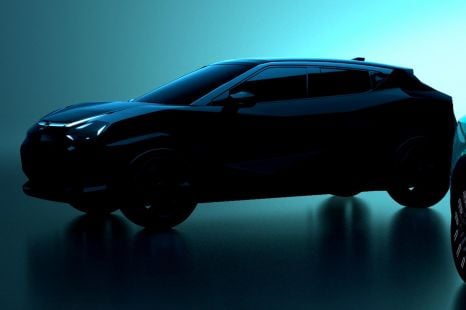

Damion Smy
Nissan Juke EV will use Leaf platform, due in 2026 - report
12 Hours Ago
An all-new model is due before year's end, but is the current BMW X1 still worth a look despite being months away from retirement?
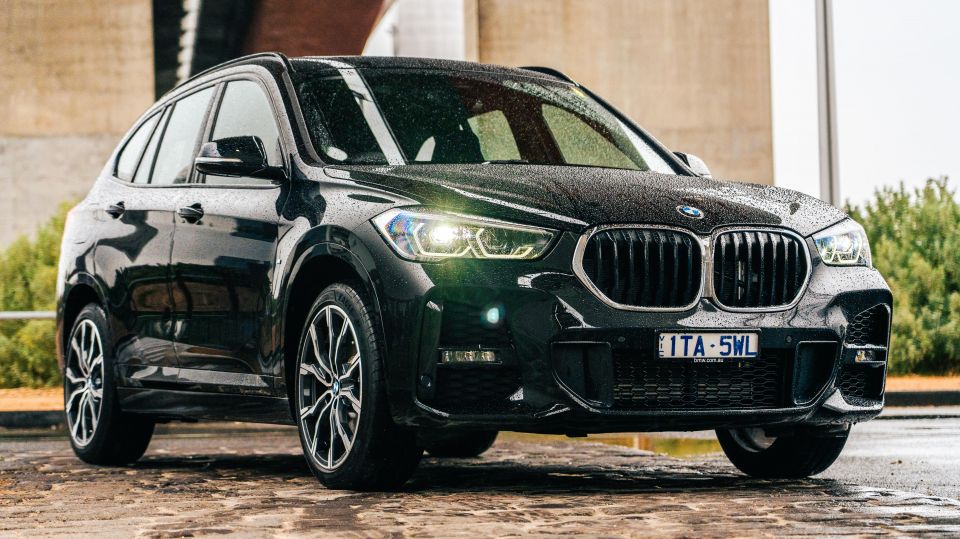
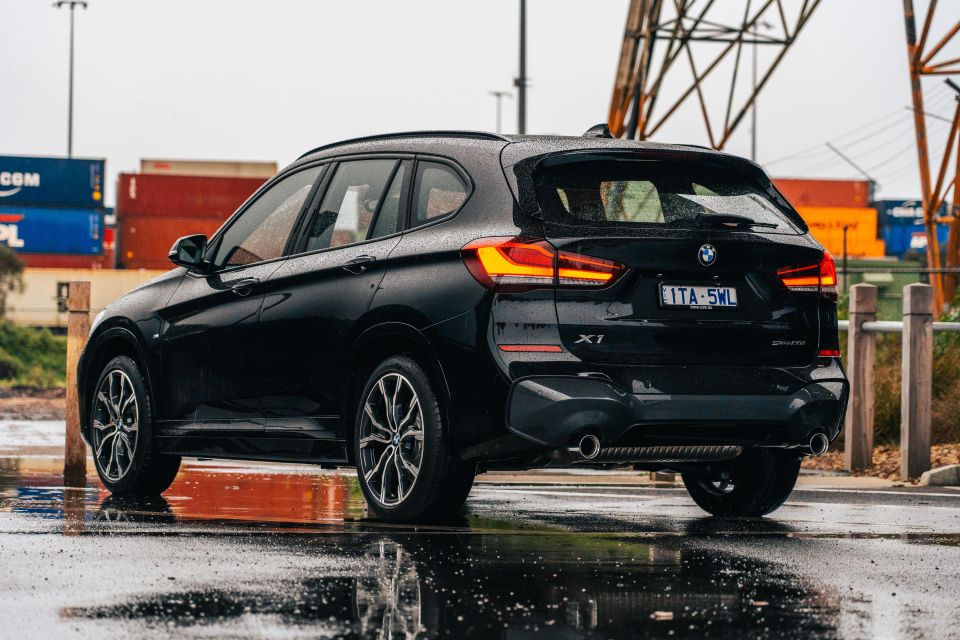

Quickly see how this car stacks up against its competition. Select any benchmark to see more details.
Where expert car reviews meet expert car buying – CarExpert gives you trusted advice, personalised service and real savings on your next new car.
The second-generation BMW X1 is nearing the end of its life, but it’s still amongst the brand’s top sellers.
Based on the UKL2 front-wheel drive platform shared with the Mini line-up, the X1 has been praised for its well-packaged cabin and relatively affordable pricing, which puts it within striking distance of mainstream-branded alternatives.
It’s facing tougher competition than ever, though. The Audi Q3 and Mercedes-Benz GLA are both newer, and the likes of Mazda and Volkswagen continue pushing upmarket with more modern, more generously-equipped alternatives.

A new-generation model is on the way before the end of the year, and the an all-electric iX1 is due in 2023. Expect the range to pick up BMW’s latest infotainment system as well as the latest, greatest assistance systems the brand has to offer.
Let’s not get ahead of ourselves though. The current X1 has at least six months of life left in it.
Should you get your hands on the model on sale today, or should you perhaps wait until the new-generation line-up starts arriving in local showrooms?
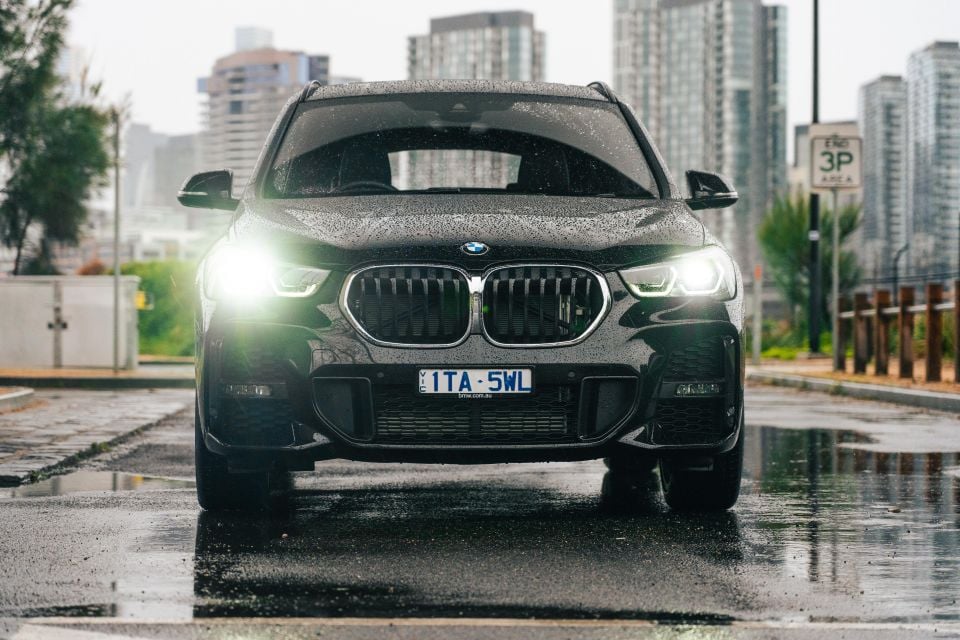
The 2022 BMW X1 range opens with the three-cylinder, front-wheel drive X1 sDrive18i at $47,900 before on-road costs, and climbs to $67,990 drive-away for the limited-edition X1 sDrive20i Sport Collection.
What about the xDrive25i flagship? CarExpert recently confirmed the Mini JCW-powered X1 was discontinued from October 2021 production, meaning the current generation will live out its final months in Australia without an all-wheel drive option.
On test we have the 2022 BMW X1 sDrive20i, priced from $56,900 before on-roads. The vehicle you see here was also optioned with the M Sport Package ($2700) and Enhancement Package ($3500), bringing the as-tested sticker to $63,100 before on-road costs.
At this price point, the X1 competes with not only with the Audi Q3, Mercedes-Benz GLA, Mini Countryman and Volvo XC40, but also with high-grade versions of the Mazda CX-5, Toyota RAV4 and Volkswagen Tiguan.
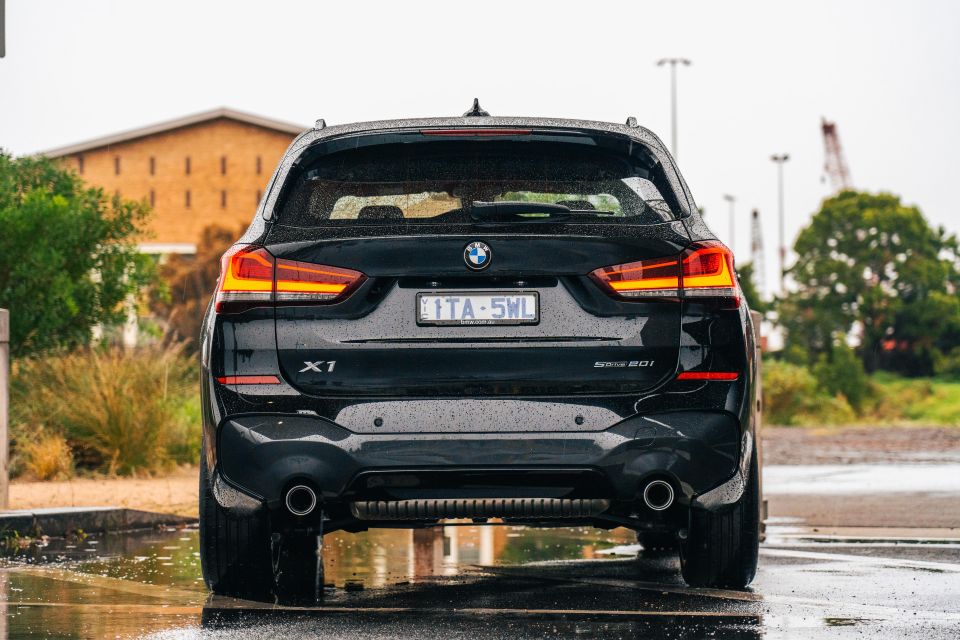
2022 BMW X1 pricing:
Prices exclude on-road costs, unless specified (D/A)
Key rivals include:
Prices exclude on-road costs
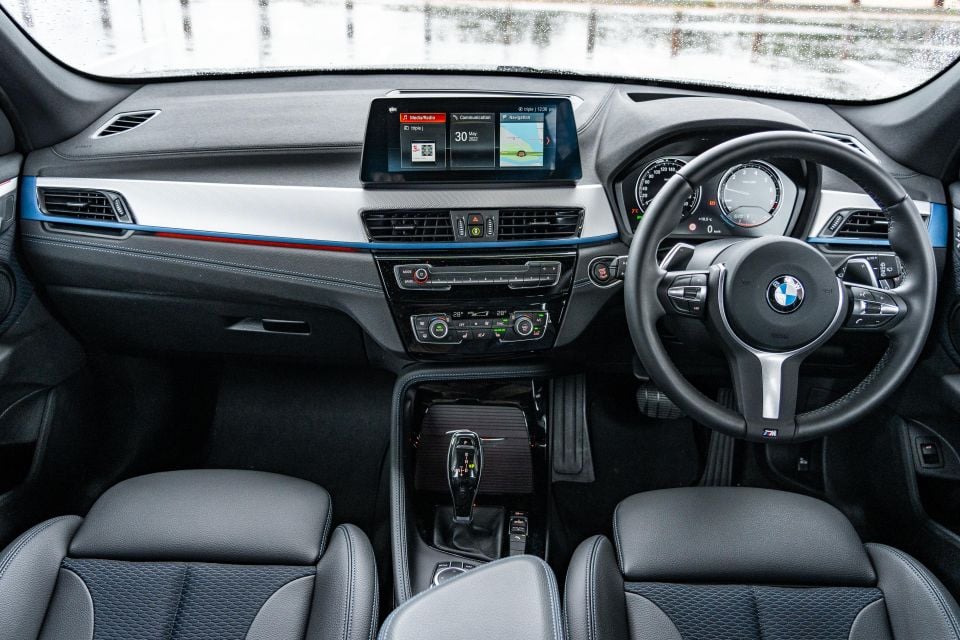
Buy your new car without the stress. It's fast, simple and completely free.

Great service from Travis and team, second time I have used this business would not hesitate to recommend them to anyone
Craig C.
Purchased a Ford Ranger in Sunshine Coast, QLD
CarExpert helped Craig save thousands on his Ford Ranger, now let us save you on your next new car.
Find a dealWhile the exterior looks pretty smart and modern, the X1’s cabin feels a generation or two behind the rest of the BMW range – because it is.
The X2 suffers from a similar issue, and it relates to everything from the design and layout of the dashboard and displays, to the look and feel of the switchgear.
Despite the 1 Series hatchback and 2 Series Gran Coupe having moved to the pre-iX cabin design language and BMW OS7.0, the X1 and X2 soldier on with the iDrive 6 infotainment and analogue instruments. Traditionalists may rejoice, but the game has moved on particularly in the smaller SUV segments.
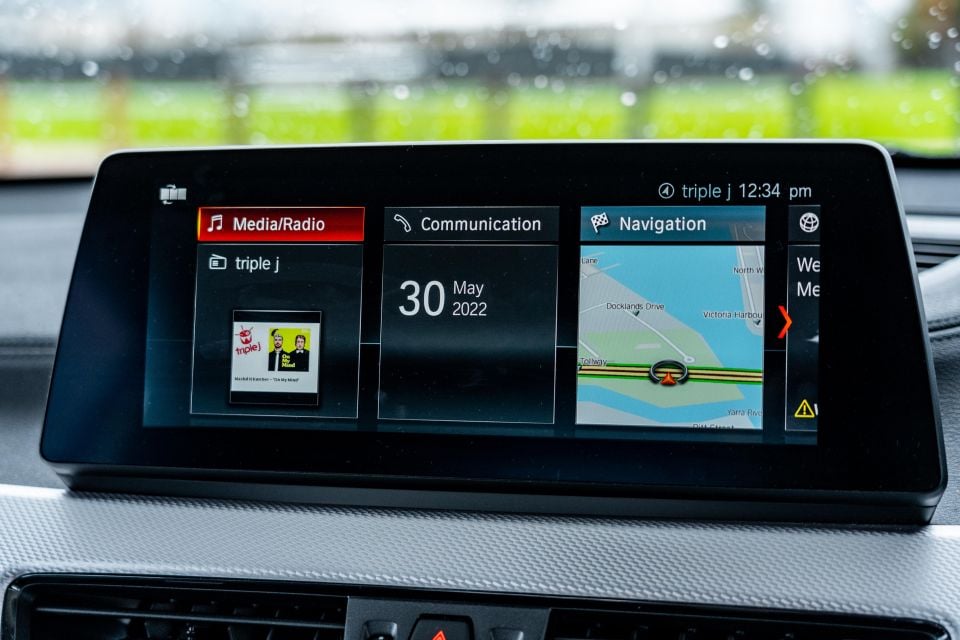
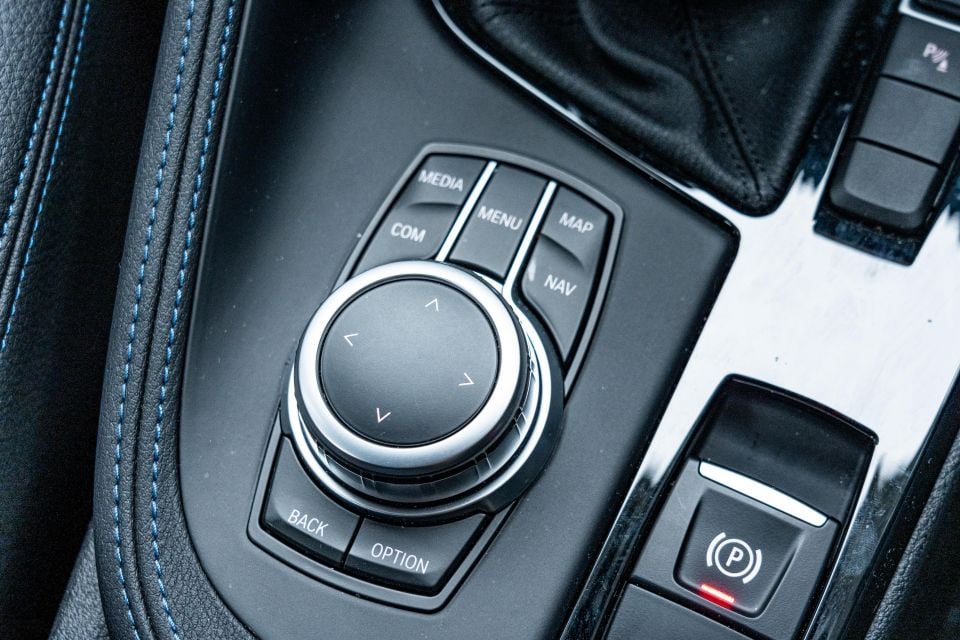
The interface is dated, as are the graphics, and the orange-backlit elements feel like a throwback. Considering the car we have on test is well over $60,000 before on-road costs, it doesn’t seem like you’re getting your money’s worth.
With that said, the iDrive 6 system is still competitive for clarity and response, and is controllable via touch inputs or via the signature rotary controller on the centre tunnel. It also includes subscriptions to various BMW ConnectedDrive services, which are detailed lower down in this review.
Further, parts of the vehicle you see here are options, including the M Sport steering wheel and Sport front seats (M Sport Package, $2700), and the panoramic sunroof (Enhancement Package, $3500).
Regardless the X1’s first row is comfortable, and the high ceiling and large glasshouse gives the impression of space. The electric front seat adjustment that comes standard with the X1 sDrive20i offers plenty of adjustability, including bolsters and lumbar, though even in its lowest setting you feel perched quite high.

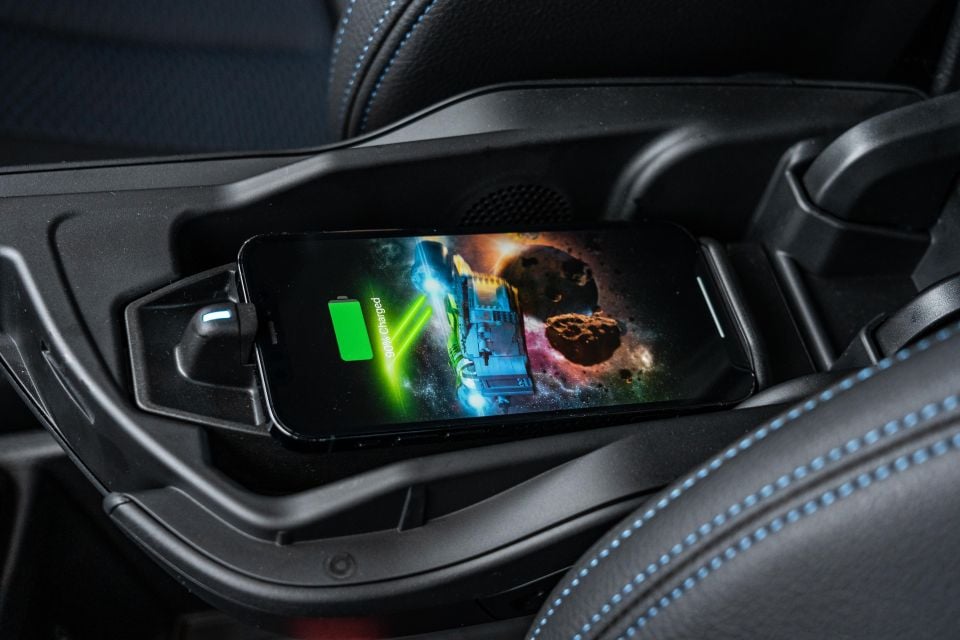
Now, many SUV buyers prefer that more elevated driving position. However the X1’s skinny body and tall roof, bundled with the high driving position make it feel a little MPV-like – it’s related to the 2 Series Active Tourer after all.
Our test car’s ‘Micro Hexagon’ and Black Sensatec combination upholstery feels sporty and avoids burning your bum on hot days, and the heating function (irrespective of upholstery) comes in handy for chilly winter mornings.
Storage is decent if not standout in today’s market, with plenty of nooks and crannies to store phones, keys wallets and drink bottles. However an ongoing complaint for most UKL-based BMW and Mini models is that the centre armrest and its wireless phone charger still doesn’t fit larger smartphones like my iPhone 13 Pro Max.
Under that armrest, however, is a deep and square space that easily holds in a larger phone and wallet, and is shaped and lined as such that loose items won’t rattle around and annoy you on the move.
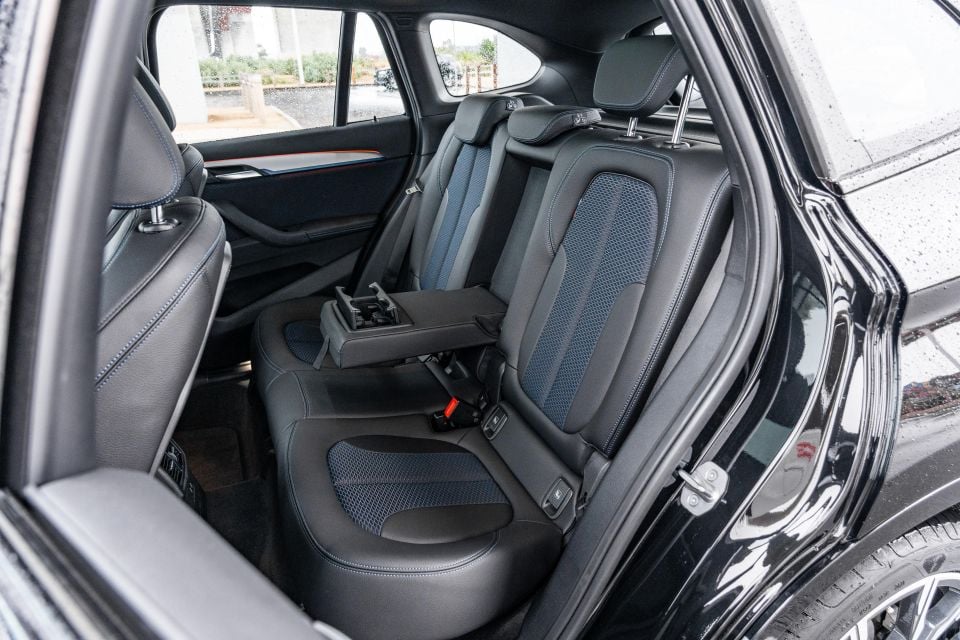
One of the X1’s trump cards, at least in this generation, is the rear-seat and boot practicality. It continues to be a selling point.
For a vehicle so compact, legroom and knee room are very good for even larger adults, as is headroom despite the optional panoramic sunroof fitted here.
The centre seat is nice and flat meaning it’t not as awkward for an adult-sized human to sit there for a reasonable amount of time.
Further amenities include a fold-down armrest in the centre with cupholders, bottle holders in the doors, rear air vents and dual USB charging ports at the rear of the centre console. You also get ISOFIX anchors on the outboard seats, as well as top-tether points behind each rear position.
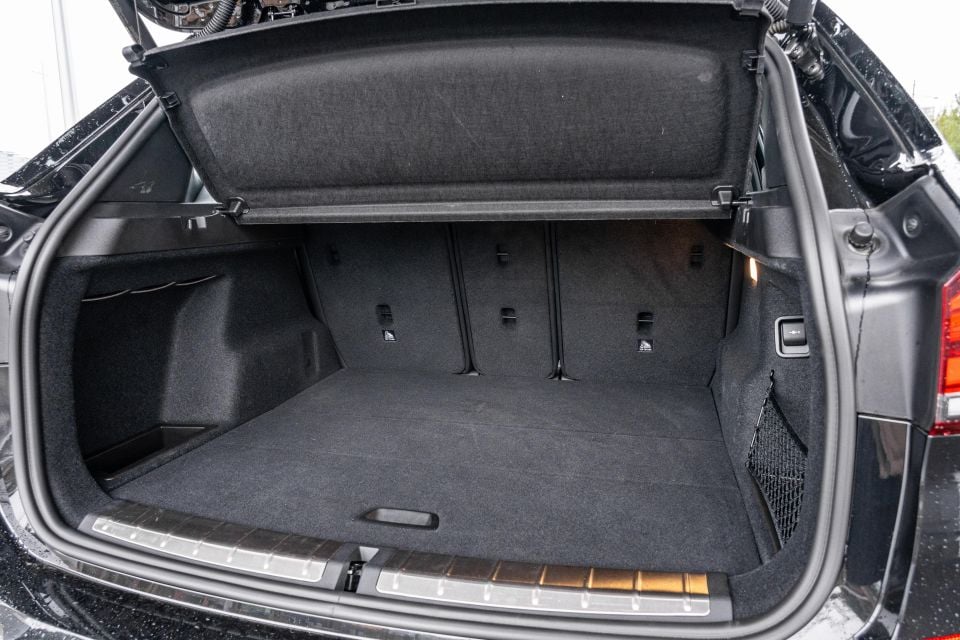
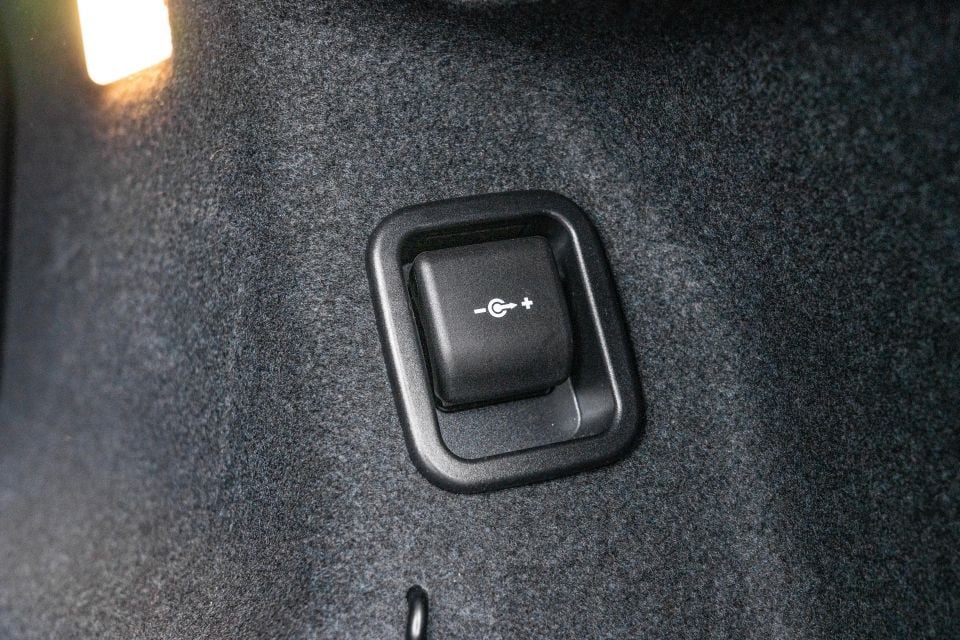

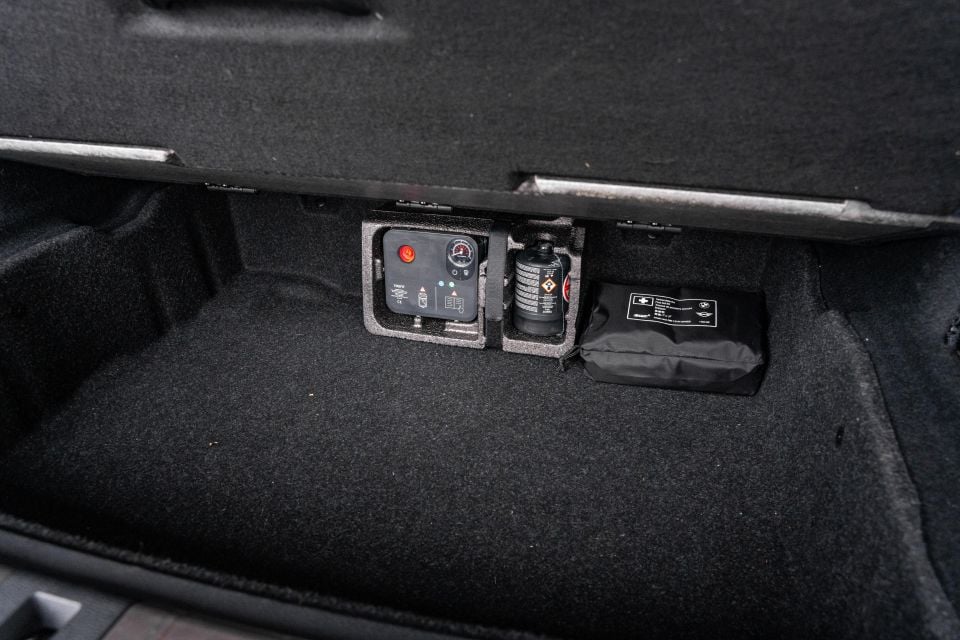
Likewise the boot is a strong point for the X1, offering competitive practicality against both small and mid-sized competitors.
Luggage volume is quoted at 505L with the second row in place, expanding to 1550L with it folded (almost flat). For reference, the X1 quotes more boot volume than a Volvo XC40 (460L) but less than an Audi Q3 (530L).
There’s a netted cubby to the right of the boot area and there’s an adjustable boot floor that reveals an underfloor compartment underneath in its higher position.
Only a tyre repair kit is supplied, there’s no spare.

Power in the X1 sDrive20i comes from a 2.0-litre turbocharged four-cylinder petrol engine, quoting outputs of 141kW (6000rpm) and 280Nm (1350-4600rpm).
The sDrive20i is front-wheel drive (sDrive in BMW-speak means FWD, xDrive means AWD), and the petrol engine is mated to a seven-speed dual-clutch automatic transmission. The same drivetrain is offered in the Mini Cooper S Countryman.
BMW claims the X1 sDrive20i can accelerate from 0-100 in 7.6 seconds, while fuel consumption is quoted at 6.5L/100km on the combined cycle.
The fuel tank measures a healthy 61 litres, with 95 RON premium unleaded required as a minimum.
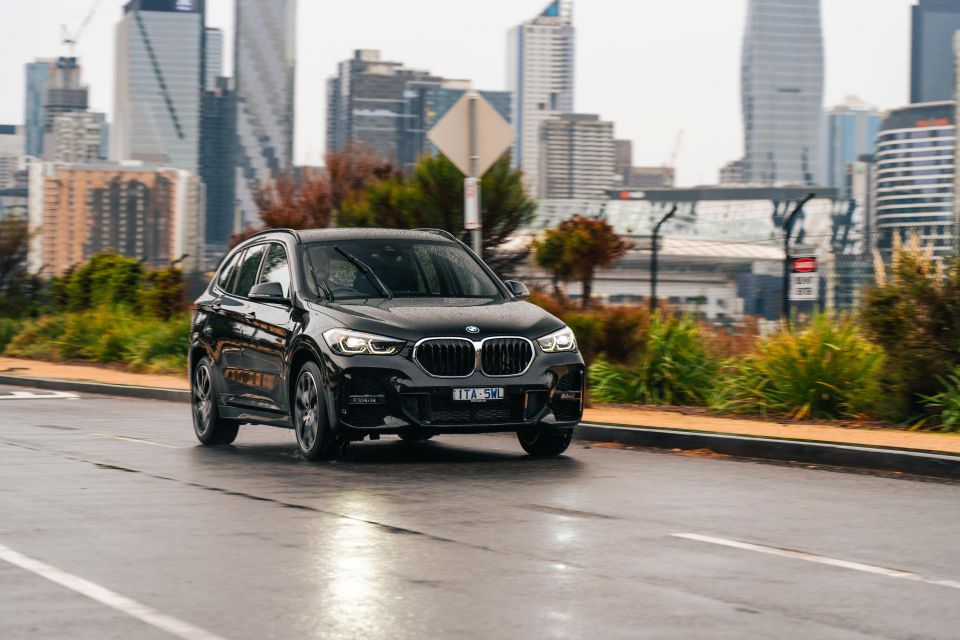
If you’ve driven any UKL-based BMW or Mini, there aren’t a lot of surprises with the sDrive20i.
It doesn’t possess a traditional rear-drive BMW feel, but there’s still a fun-to-drive character about the X1 and this engine really is a peach – it’s the Mini Cooper S drivetrain after all.
The 2.0-litre turbo is punchy once you hit the torque band and there’s a decent snarl to the exhaust as revs climb and as the seven-speed dual-clutch transmission upshifts.
BMW’s 7.6-second claim from 0 to 100km/h isn’t quite hot hatch quick, but rolling acceleration is quite impressive and this sort of pace is more than enough for the target demographic.
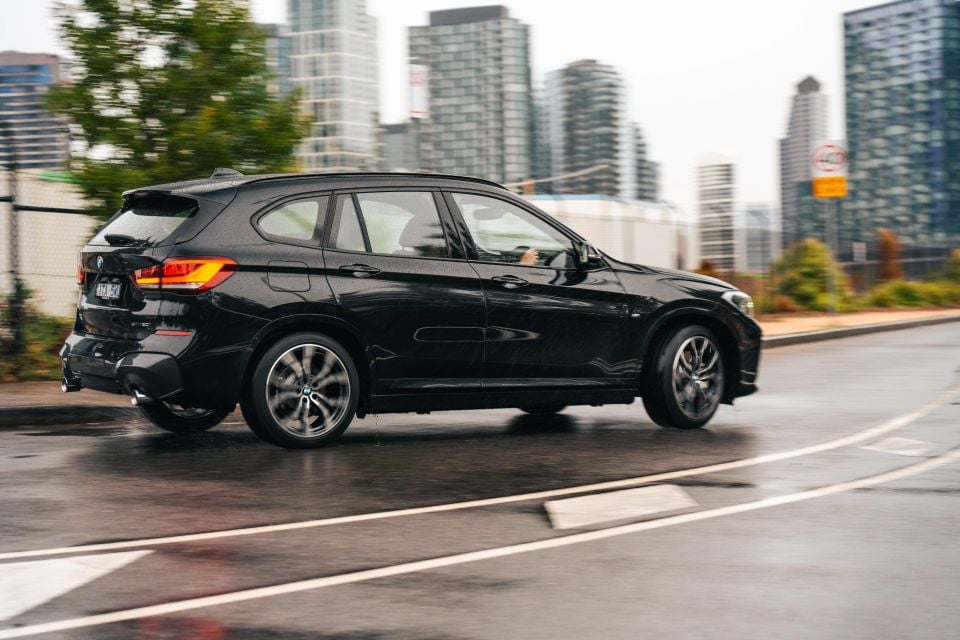
My main gripe is that there’s a bit of a hole in response down low, particularly off the line or when coming out of a slip lane at low speed.
It seems to be the way BMW calibrates the throttle for most vehicles in Comfort mode, because it’s something I’ve experienced in several models and across different transmission types.
Once it’s moving though, the sDrive20i’s transmission shifts quickly and intuitively, and there’s next to none of that jerky feeling you get in rival transmissions. The unit used by BMW and Mini is a version of the one used in the Ford Puma, and it’s arguably one of the most conventional-feeling dual-clutch designs.

From a ride and handling perspective the M Sport-equipped X1 is surprisingly well-balanced, offering a firmer ride that brings flat-ish cornering, with a level of comfort dialled in that won’t break your teeth like some other more focused BMW nameplates with sportier equipment lines. You do feel every undulation and imperfection to a point, though.
It’s made even better by the fluid, direct steering feel which is about on par for response with the Mini Countryman, both being the more engaging options in the premium compact SUV segment. That chunky, squishy M Sport steering wheel is nice to turn at any speed, too..
This makes me think the standard xLine-equipped X1 would be more comfortable again, so it’s something to consider if you’re tossing up between the standard and optional equipment packages.
Despite being front-drive only, the X1 sDrive20i feels stable and sure-footed regardless of the speed or conditions. My time with the car (as you can see in the images) included plenty of very wet weather at the start of Melbourne’s cold winter, and even at 100km/h in heavy rain it felt rock solid.

Where expert car reviews meet expert car buying – CarExpert gives you trusted advice, personalised service and real savings on your next new car.
The Goodyear Eagle F1 tyres fitted to the optional 19-inch M Sport rims on our tester were likewise grippy in the wet and dry, but like other reviews of UKL-based vehicles we found tyre roar to be an issue.
Refinement is something that should be a given with premium brands regardless of the segment or price bracket. The fact this continues to be such a common issue with front-drive BMW and Mini models is disappointing.
Driver assistance is another area sorely lacking. The X1 persists with a very basic package which includes AEB for city and interurban speeds, lane departure warning (but no lane-keep assist), and that’s about it.
Adaptive cruise control forms part of the optional Drivers Assistant Package ($1250) – which also adds adaptive LED headlights and tyre pressure monitoring – while other features like blind-spot monitoring and rear cross-traffic alert are simply unavailable. For a premium brand, it simply doesn’t cut it.
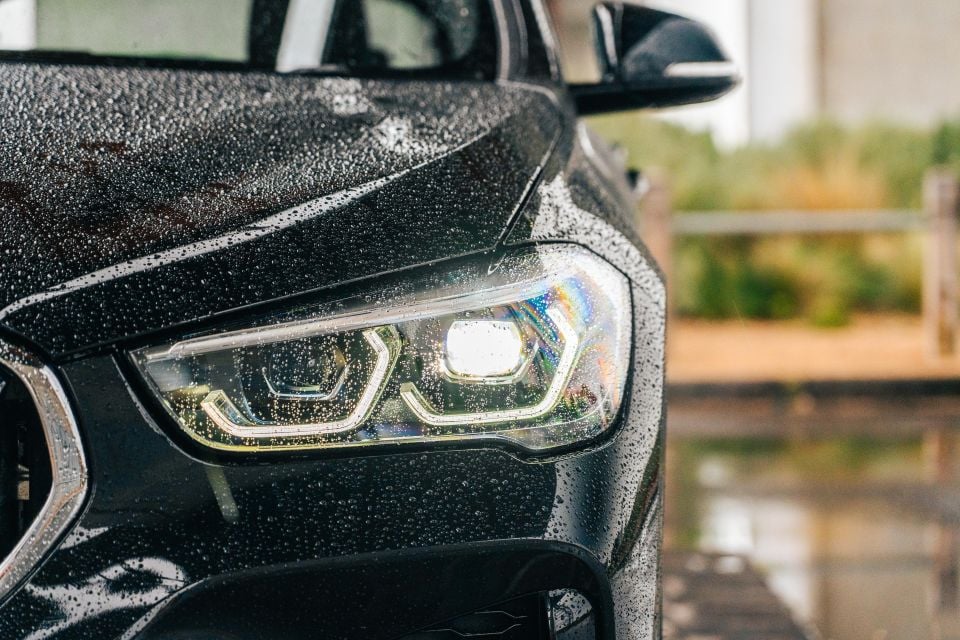
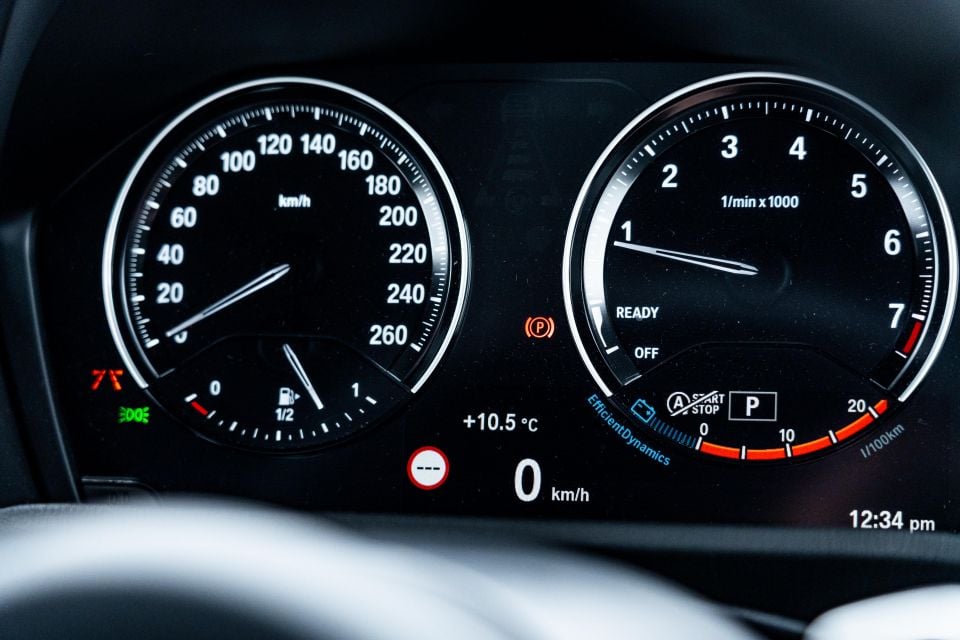
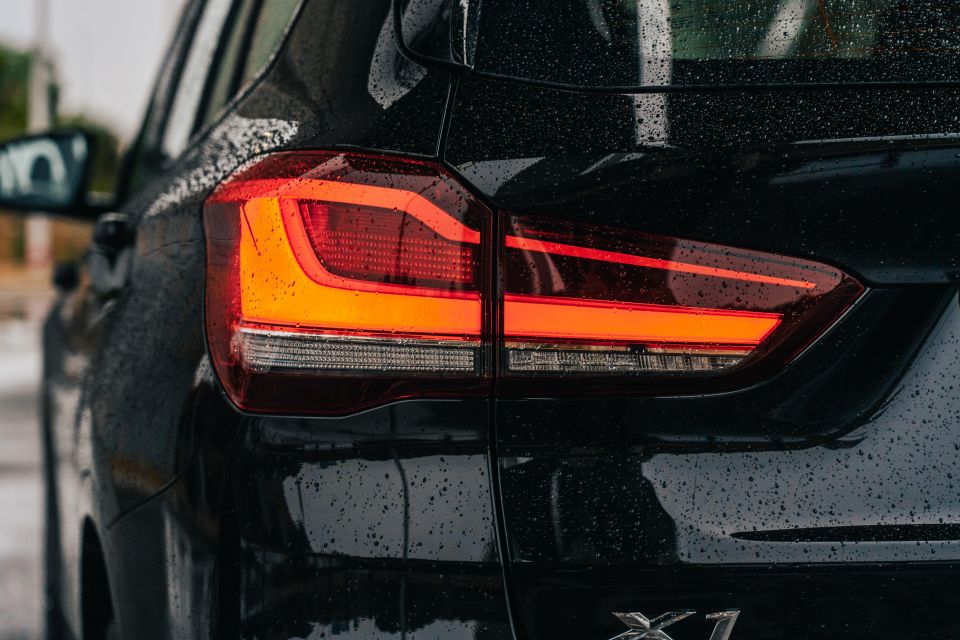

X1 sDrive20i highlights:
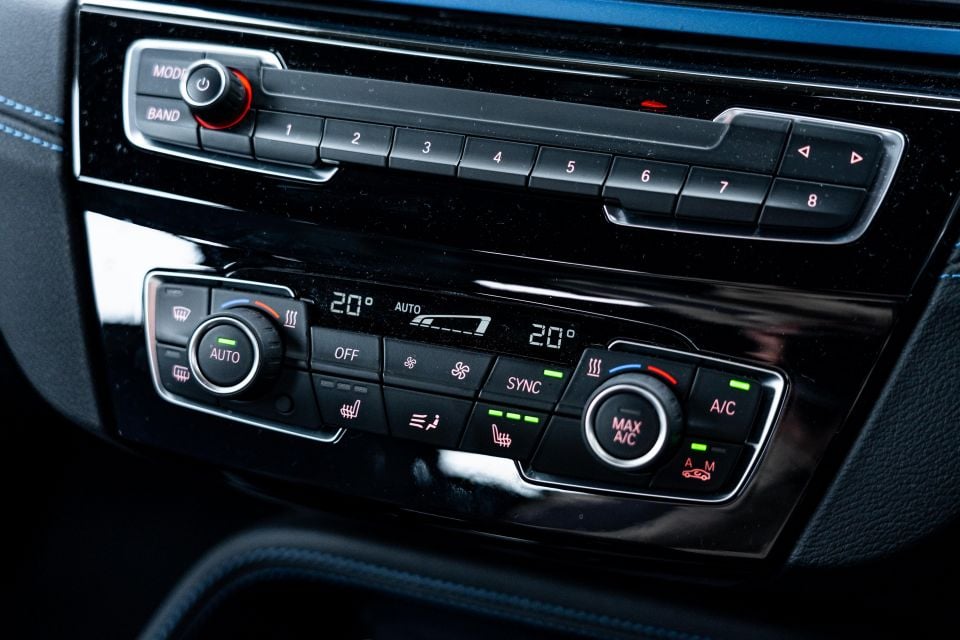
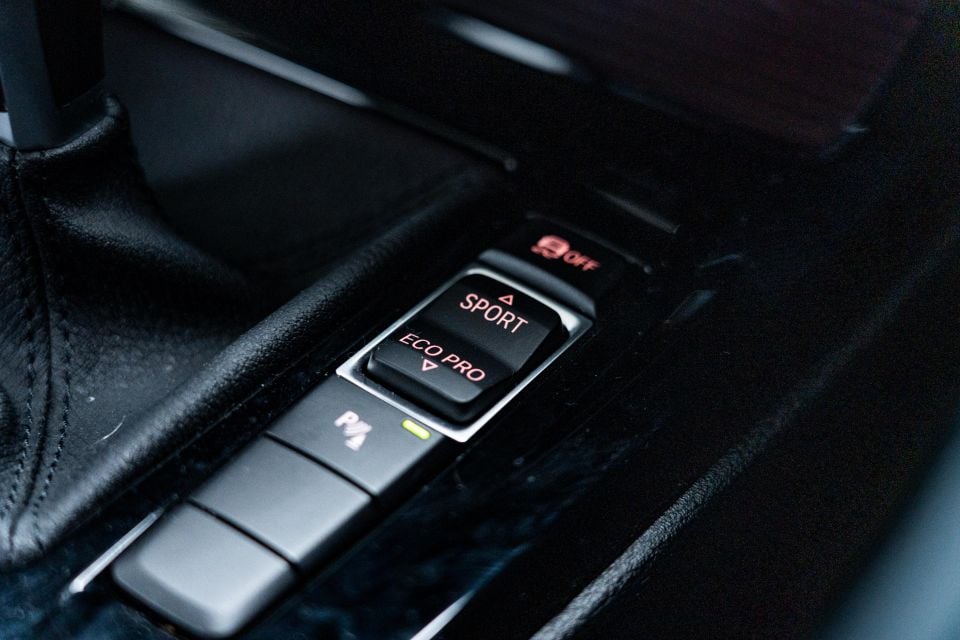
That’s in addition to the sDrive18i and sDrive18d specification:
* 3-year subscription ** 1-year subscription
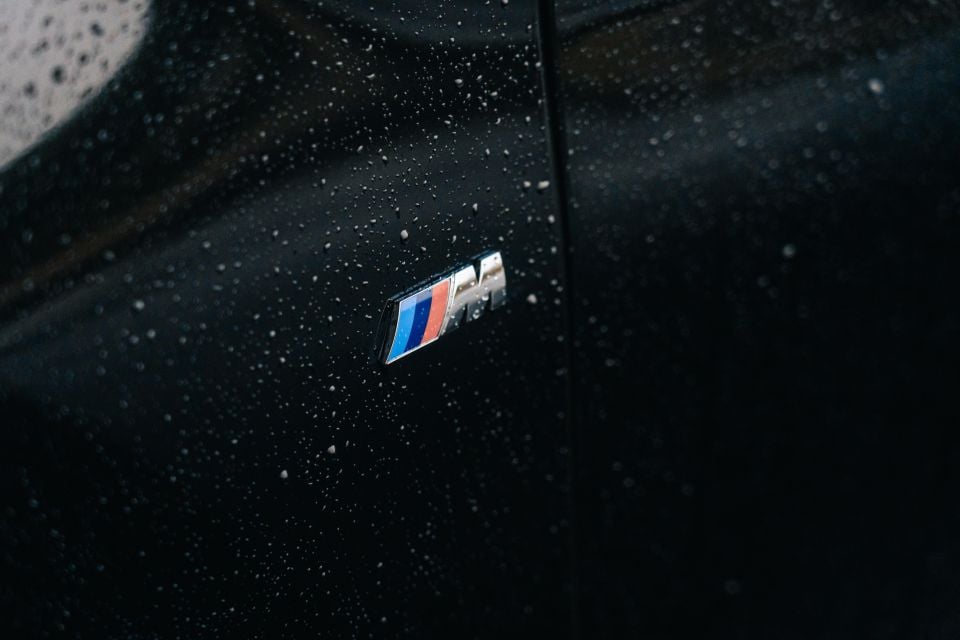
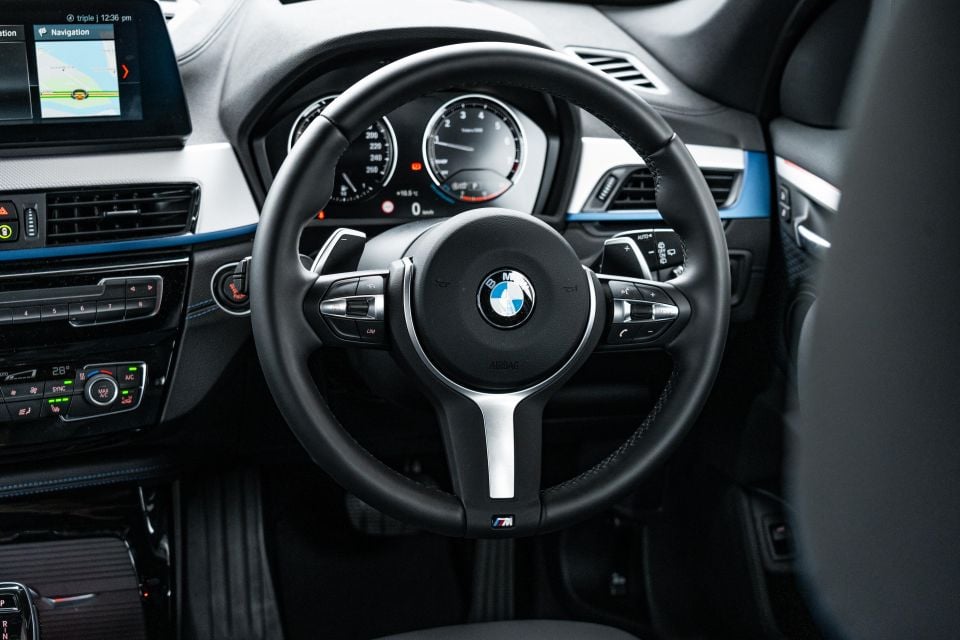
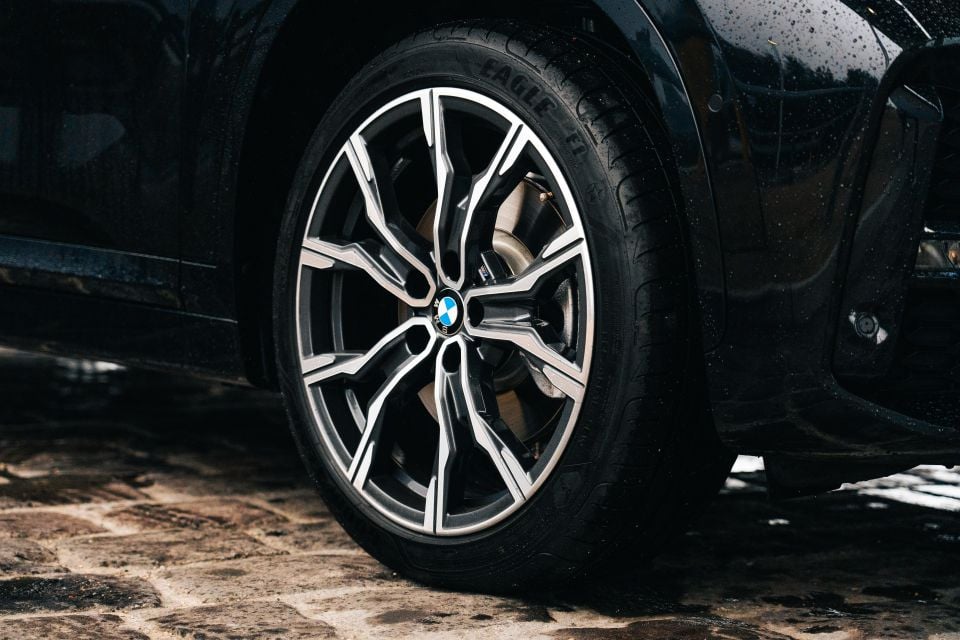
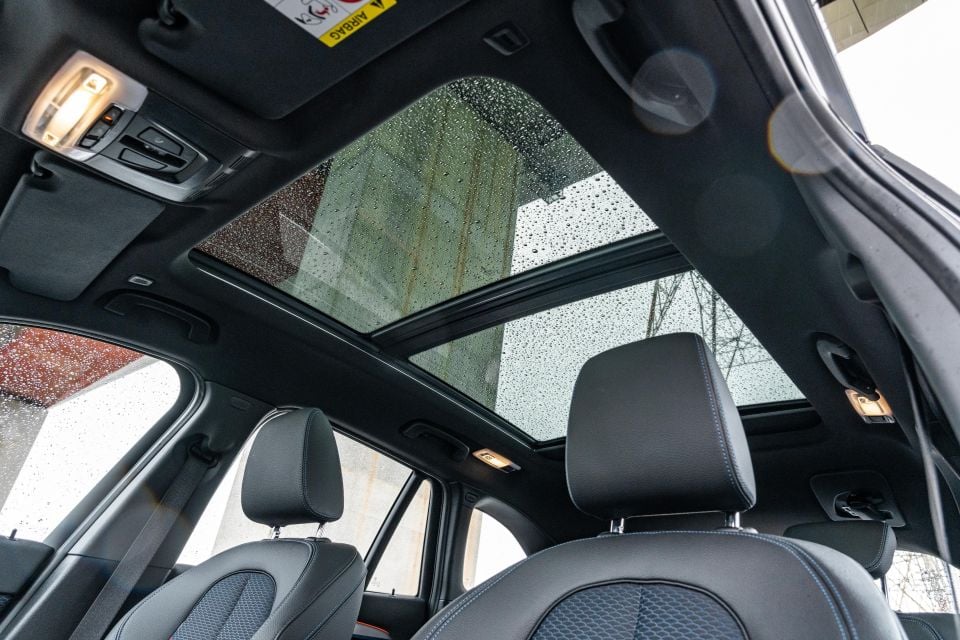
As is typical of premium brands, the BMW X1 is offered with a catalogue of single-item cost options as well as more comprehensive option packages – think M Sport and the like.
Our test car was fitted with the following options:
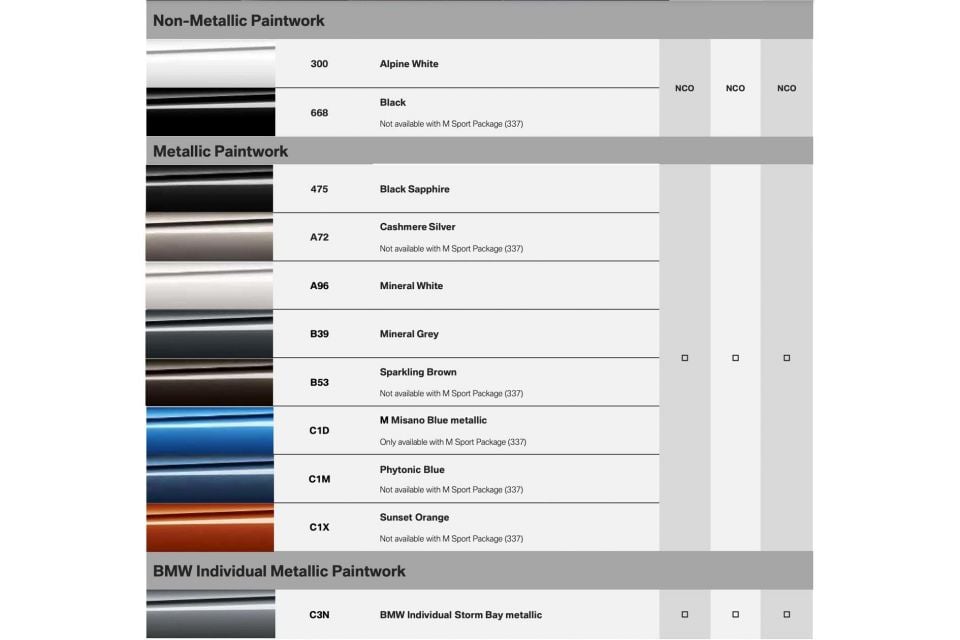
Meanwhile, available paint finishes include:
Non-Metallic – $NCO
Metallic – $1308
BMW Individual – $2000
* Not available in conjunction with M Sport Package ** Only available in conjunction with M Sport Package
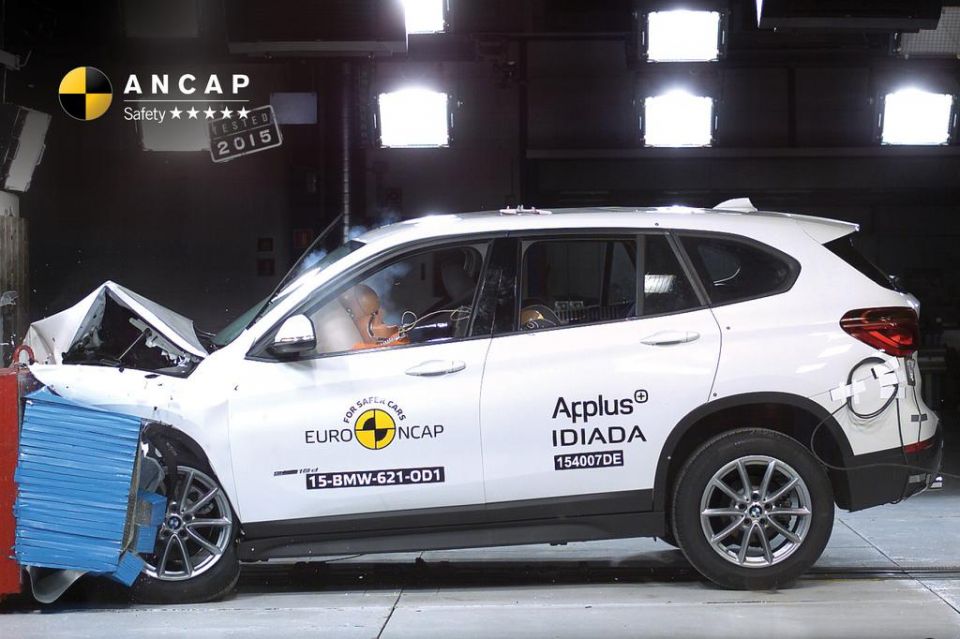
The BMW X1 scored a five-star ANCAP safety rating based on Euro NCAP testing conducted in 2015.
It scored 90 per cent for adult occupant protection, 87 per cent for child occupant protection, 74 per cent for pedestrian protection and 70 per cent for safety assist.
Standard safety equipment includes:
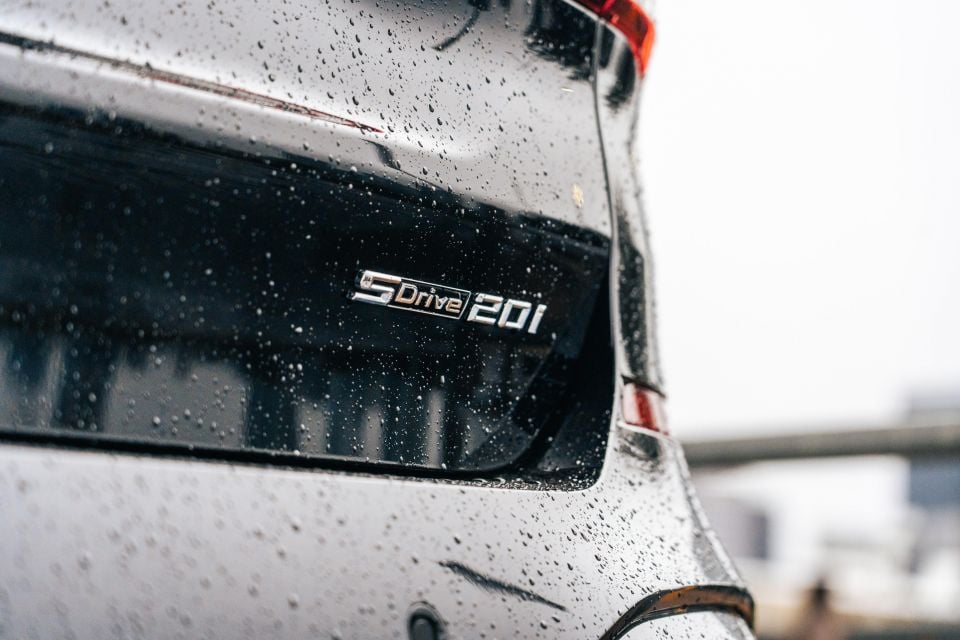
BMW continues to lag behind rival brands with its three-year, unlimited-kilometre warranty. Audi, Genesis, Lexus, Mercedes-Benz and Volvo all offer five years of cover.
BMW offers two capped-price servicing plans on the X1 – a five-year/80,000km Basic plan is $1750, while the more comprehensive Plus plan costs $5010.
The Plus plan includes replacement brake pads and discs, clutch discs and plates, as well as wiper blades.
As for fuel consumption, we saw an indicated 8.2L/100km in mixed driving favouring peak-hour commuting. It’s decent economy given the conditions, but not groundbreaking.

It may be the most affordable ticket into BMW’s expanding SUV line-up, but the ageing current-generation car is outgunned by premium and mainstream rivals – particularly at this sDrive20i’s price point.
The X1 is a spacious and practical offering for families keen on a premium-badged SUV, and this sDrive20i’s drivetrain is a banger for performance, engagement and overall refinement.
However, its design and technology is sorely lagging behind the wider BMW range as well as its rivals.

You can buy a lot of good metal for $60,000 – from the excellent Audi Q3 and Volvo XC40, to the Mazda CX-5 and Volkswagen Tiguan. All can be had for similar money to the BMW with more features, more power and all-wheel drive.
The related Mini Countryman is also arguably the more fun and starts at a more affordable price point.
If you must have a BMW X1 and don’t want to wait for the redesigned new-generation model, my advice is to find a well-optioned base model (sDrive18i or sDrive18d) which should come in cheaper than the base price of the sDrive20i while also packing more equipment.
Given the level of improvements and upgrades to the new car, we’re excited to see what the 2023 BMW X1 has to offer.
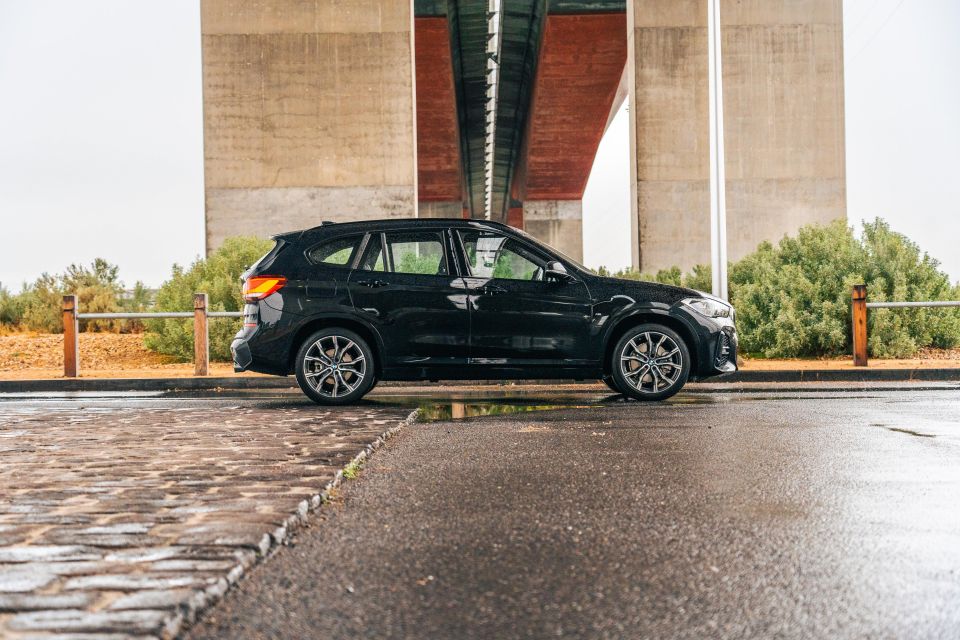
Click the images for the full gallery
MORE: Everything BMW X1
Where expert car reviews meet expert car buying – CarExpert gives you trusted advice, personalised service and real savings on your next new car.
James Wong is an automotive journalist and former PR consultant, recognised among Australia’s most prolific motoring writers.


Damion Smy
12 Hours Ago
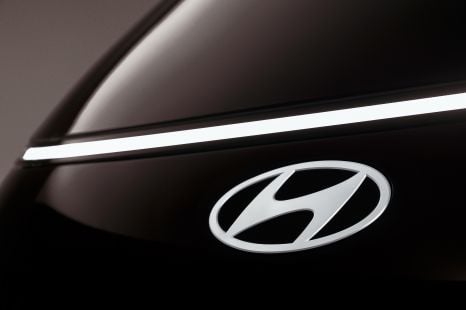

Damion Smy
15 Hours Ago
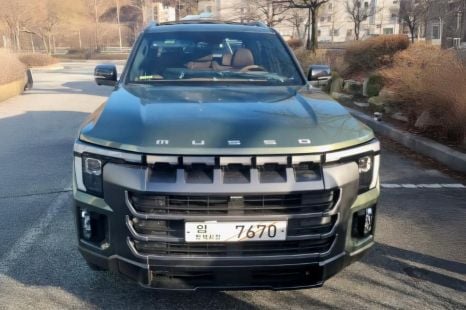

Damion Smy
19 Hours Ago


Damion Smy
21 Hours Ago
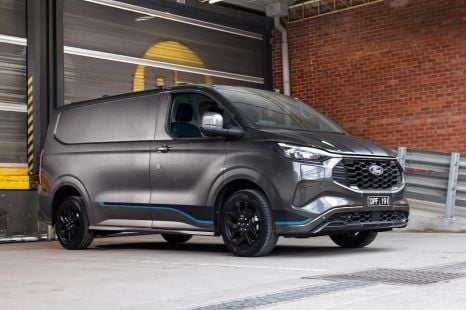

Damion Smy
21 Hours Ago


Damion Smy
21 Hours Ago